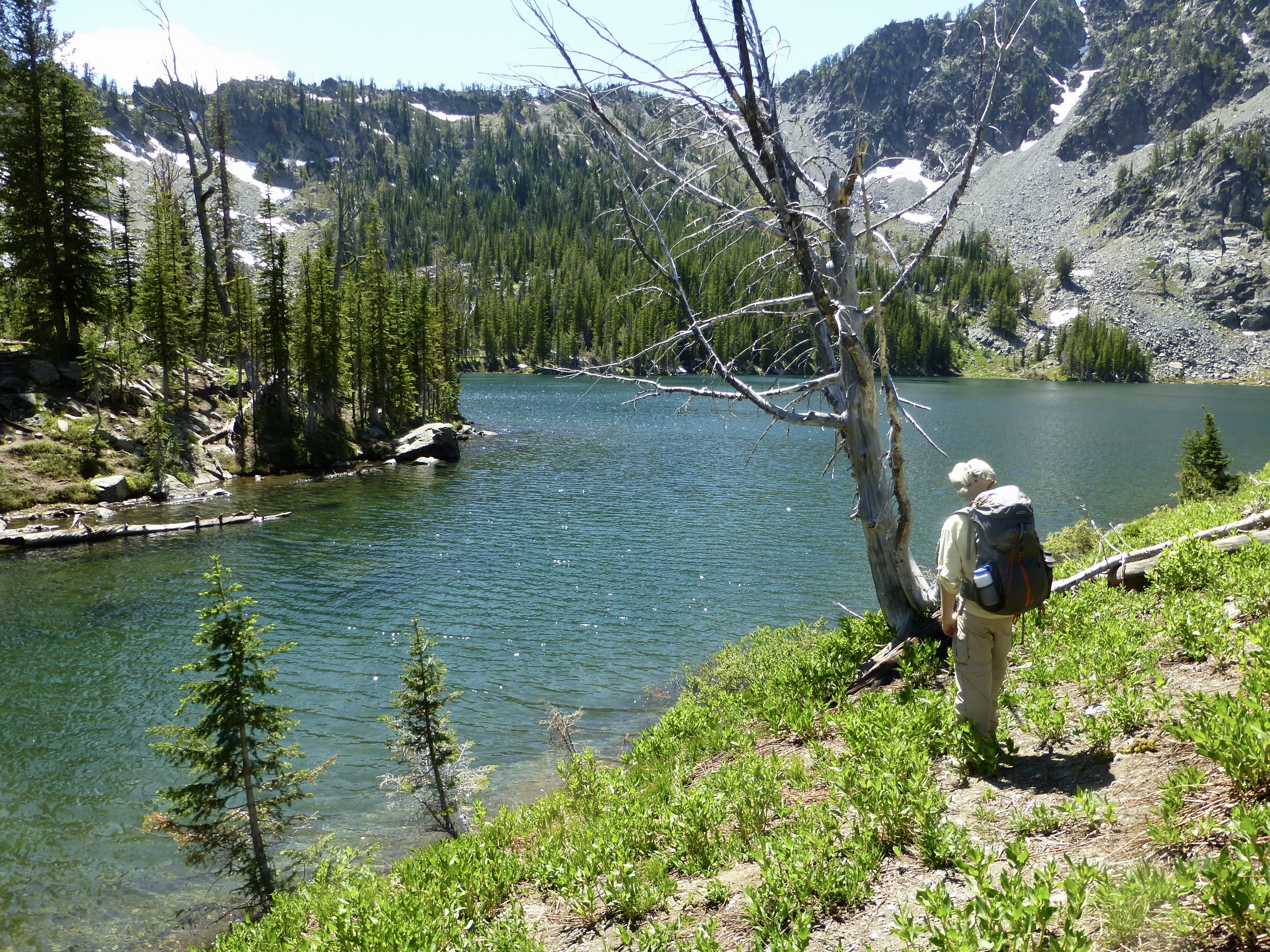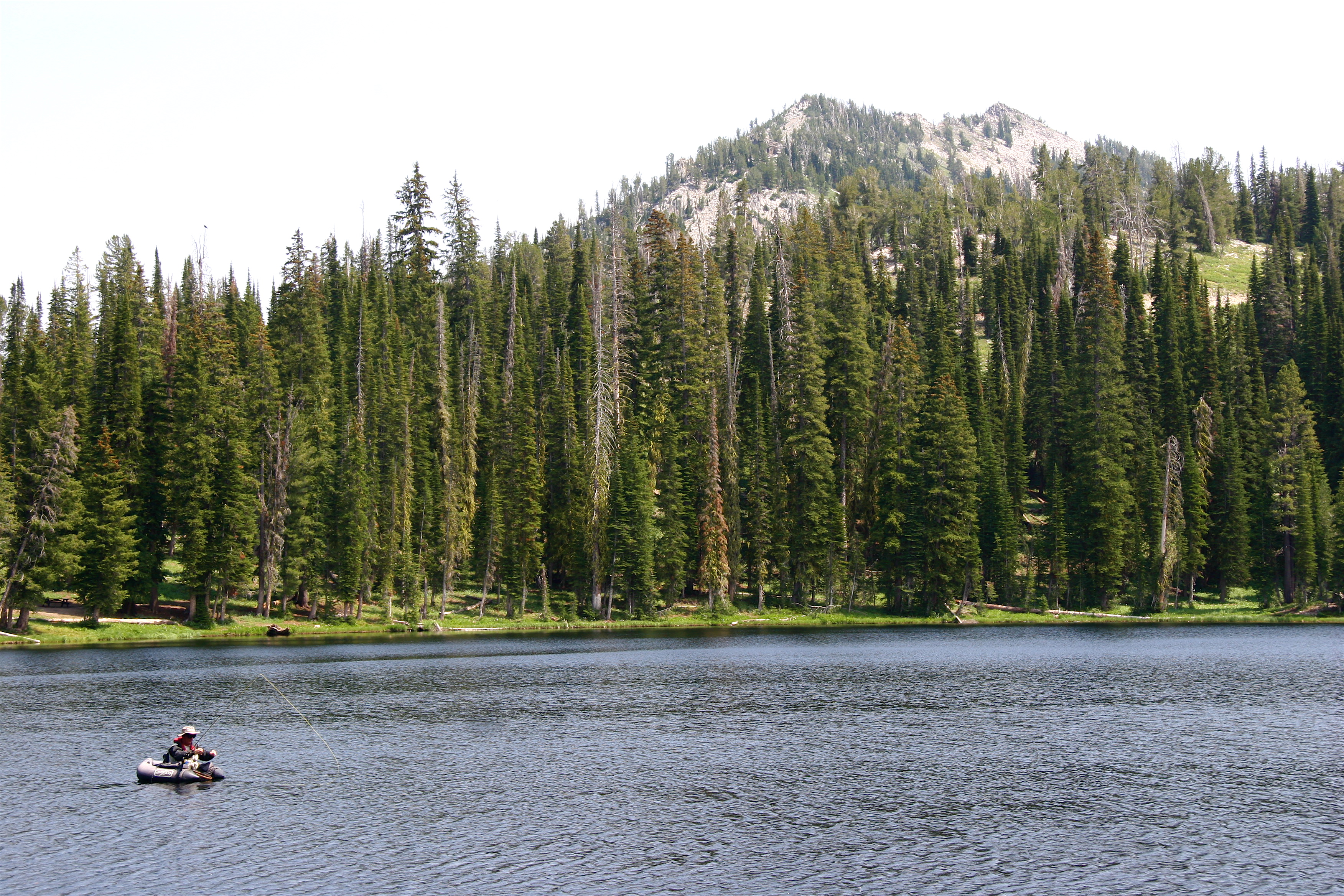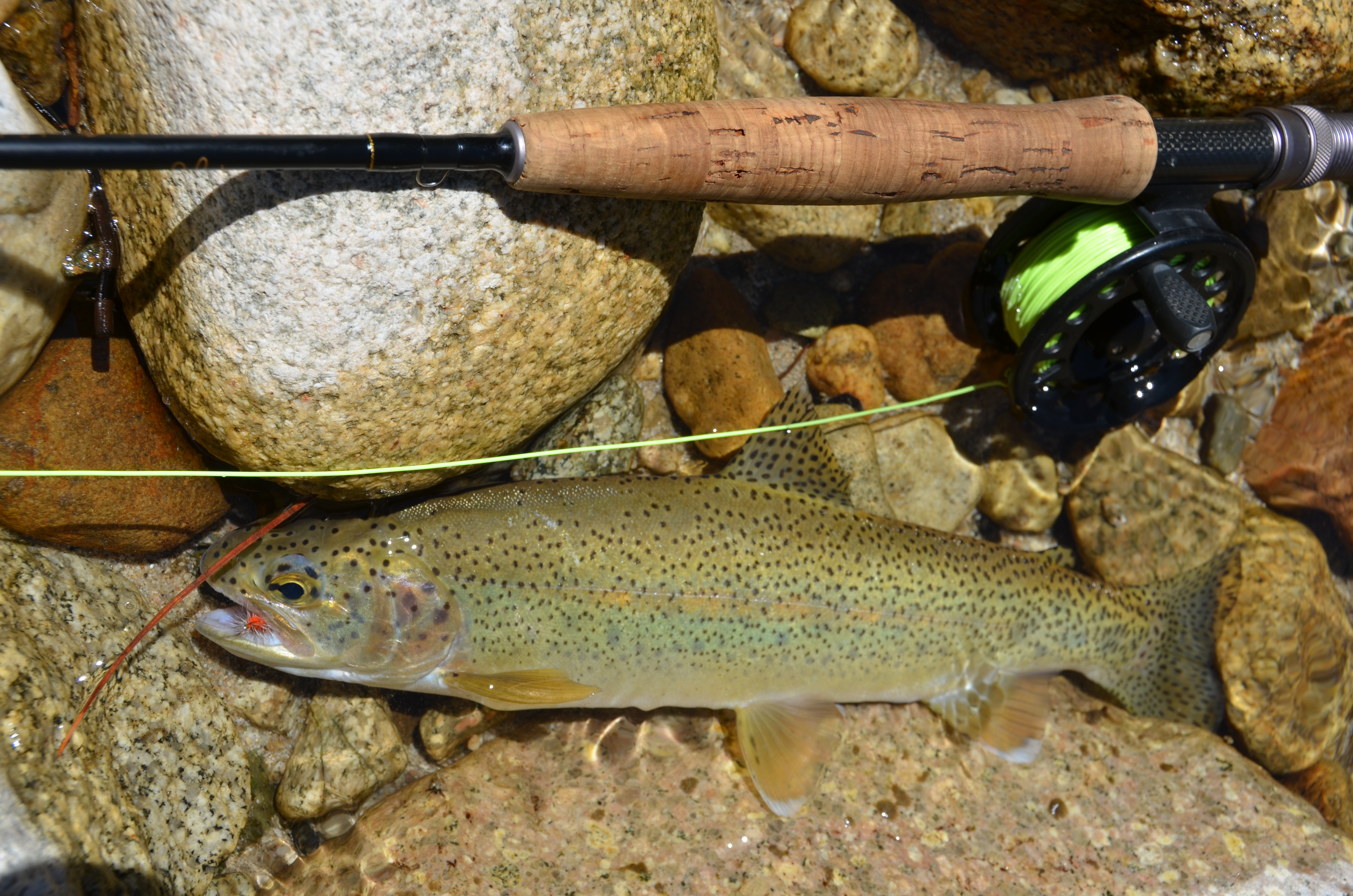Distant mountain peaks loom in the summer heat and stand like a cool oasis for anglers. Hidden in the bowls, basins and valleys are many lakes brimming with trout and waiting for intrepid anglers.

Idaho has many mountain ranges, nearly all of which have lakes that contain fish. Idaho Fish and Game has long been committed to keeping those lakes stocked with fish by a variety of methods, including aircraft, horseback and backpack.
Most mountain lake stocking is done by aircraft these days, and Fish and Game crews annually drop hundreds of thousands of fingerling trout into distant lakes where they can grow and adventurous anglers can catch them. Some also have grayling, which are rarely found in Idaho outside of mountain lakes. Which lakes are stocked is no secret. You can find that information on Fish and Game’s Fishing Planner.
Choose your adventure
One misconception about mountain lakes is you have to strap on your hiking boots and scale a mountain to reach them. It’s true that some lakes are hidden-away secrets guarded by the mountains and the few hardy souls who hike into those remote, wild places. But many other lakes are reasonably accessible with a short hike on well-marked and maintained trails.
There are also mountain lakes you can drive to in a family vehicle, and others that are accessible by four-wheel-drive roads, or motorized trails that allow you to drive or ride a UTV, ATV or motorcycle. You will need to check with land management agencies, such as Forest Service or Bureau of Land Management, to see what type of trails access certain lakes.
Even if motorized travel is allowed on a trail, make a call to the land management agency and determine trail conditions because some motorized trails can be challenging to navigate. Same goes for hiking trails. A call to a local office can often prevent disappointment when a trail is blocked by downed trees, washouts, etc.

How to choose a lake
This can be a tricky proposition because if you’re looking at a map or satellite image, how do you know which lake to choose? One thing to remember is all mountain lakes are not created equal. Typically, a lake in a valley or meadow with an inlet and outlet and shallow areas will be more productive than a deep lake in a rocky basin strictly fed by snowmelt, which can create a very sterile environment. But that’s not always the case, and that's where exploration and a little luck come into play.
A good initial strategy is to find an area with a cluster of lakes, which is fairly common in the mountains. If one lake isn’t producing good fishing, another is nearby. Don’t assume that hiking farther will improve your odds of catching more fish. Most mountain lakes don’t get a huge amount of fishing pressure, so don’t overlook an accessible lake, which might have outstanding fishing while a distant lake has similar or lesser fishing opportunity.
If you’re planning your trip based on stocking reports, remember that most trout stocked in mountain lakes are fingerlings, and it can take three to four years for them to grow to catchable size. However, catchable-size trout are sometimes stocked in lakes that are road accessible, and some lakes have naturally reproducing populations.
Some mountain lakes have brook trout, which tend to dominate where they are present. That can be good news and bad. Brook trout can provide lots of fishing action, and they can be a lot of fun to catch for young or new anglers. There’s typically a 25-fish bag limit for brook trout, but check the Fishing Seasons and Rules booklet because there are exceptions. While lots of fish and a generous bag limit might be enticing, brook trout can also become overpopulated in mountain lakes, which means there are lots of fish, but few over 6-inches long.
Savor the experience
There’s little argument the main point of the trip to a mountain lake is to catch fish, but don’t get fixated on them. Mountain lakes are found in some of Idaho’s most spectacular places, and let’s be honest, you could probably also catch a trout in a neighborhood park pond, lake, reservoir or river within a short drive of your home.
But mountain lakes are special places with the opportunity to experience spectacular scenery, wildlife and solitude. Definitely enjoy the fishing, and chances are good you will catch some nice fish, but don’t let a lack of fish spoil your outing. Chalk it up to experience and use it as a springboard for your next outing.
Another benefit of Idaho’s mountains is they contain thousands of lakes – probably more than you could explore in a lifetime of summers – so you will likely never run out of new ones to explore, or favorites that you can revisit.

Fishing tips for mountain lakes
- Mountain lakes fishing tends to be a fairly simple affair. Basic bait and tackle will usually work well. Bring a small assortment of spoons and spinners, maybe a few different types of baits (or catch grasshoppers if available). For fly anglers, woolly buggers, small nymphs and attractor flies are usually sufficient.
- Remember fish are not evenly dispersed in a lake. Start looking for them in obvious places, such near inlets and outlets, or where there’s structure, such as downed logs, lily pads, boulders, bluffs, etc.
- Bring polarized sunglasses and find a high spot. Water in mountain lakes is often clear, so you can often seeing cruising trout just beneath the surface if you watch carefully. Also look for rings from rising fish, which is a clue that they’re feeding on insects on, or near, the surface.
- If feasible, bring a float tube or small raft, which will allow you to access more shoreline and also catch trout cruising in the center of the lake.
- Like any waters, trout will go on and off the bite, so don’t give up if you don’t immediately catch something. However, if after a reasonable length of time you don’t get any bites or see any signs of fish, move to a different lake if that’s feasible.
Here's more about mountain lakes and how Fish and Game manages them.

